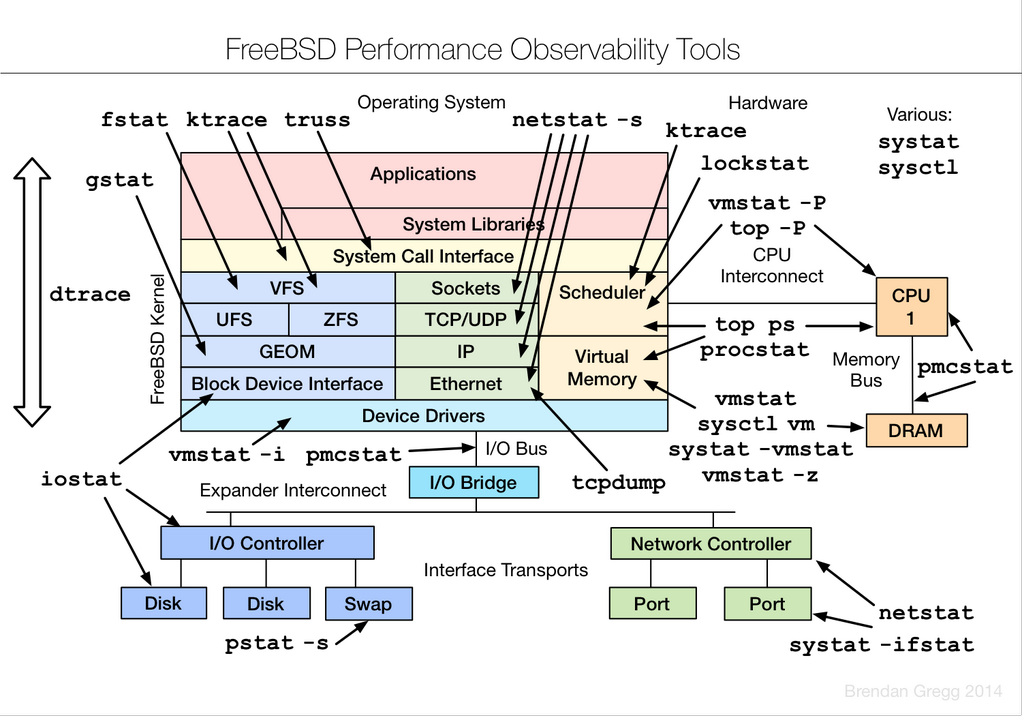UIO相关的结构体和函数定义:
#include <sys/types.h>
#include <sys/uio.h>
struct uio {
struct iovec *uio_iov; /* scatter/gather list */
int uio_iovcnt; /* length of scatter/gather list */
off_t uio_offset; /* offset in target object */
ssize_t uio_resid; /* remaining bytes to copy */
enum uio_seg uio_segflg; /* address space */
enum uio_rw uio_rw; /* operation */
struct thread *uio_td; /* owner */
};
int
uiomove(void *buf, int howmuch, struct uio *uiop);
int
uiomove_nofault(void *buf, int howmuch, struct uio *uiop);
关于uio结构体需要注意的是:如果uio_iovcnt不为1,可以把uio_iov所指向的struct iovec看成一个连接起来的大buffer。uio_offset指向这个buffer的offest,而uio_resid表明还有多少字节需要copy。在执行read操作时,uio_offset表明已经填充的buffer大小,而uio_resid表明buffer剩余的空间。可以参考这个程序。
uiomove和uiomove_nofault本质上调用的都是uiomove_faultflag函数:
static int
uiomove_faultflag(void *cp, int n, struct uio *uio, int nofault)
{
struct thread *td;
struct iovec *iov;
size_t cnt;
int error, newflags, save;
td = curthread;
error = 0;
KASSERT(uio->uio_rw == UIO_READ || uio->uio_rw == UIO_WRITE,
("uiomove: mode"));
KASSERT(uio->uio_segflg != UIO_USERSPACE || uio->uio_td == td,
("uiomove proc"));
if (!nofault)
WITNESS_WARN(WARN_GIANTOK | WARN_SLEEPOK, NULL,
"Calling uiomove()");
/* XXX does it make a sense to set TDP_DEADLKTREAT for UIO_SYSSPACE ? */
newflags = TDP_DEADLKTREAT;
if (uio->uio_segflg == UIO_USERSPACE && nofault) {
/*
* Fail if a non-spurious page fault occurs.
*/
newflags |= TDP_NOFAULTING | TDP_RESETSPUR;
}
save = curthread_pflags_set(newflags);
while (n > 0 && uio->uio_resid) {
iov = uio->uio_iov;
cnt = iov->iov_len;
if (cnt == 0) {
uio->uio_iov++;
uio->uio_iovcnt--;
continue;
}
if (cnt > n)
cnt = n;
switch (uio->uio_segflg) {
case UIO_USERSPACE:
maybe_yield();
if (uio->uio_rw == UIO_READ)
error = copyout(cp, iov->iov_base, cnt);
else
error = copyin(iov->iov_base, cp, cnt);
if (error)
goto out;
break;
case UIO_SYSSPACE:
if (uio->uio_rw == UIO_READ)
bcopy(cp, iov->iov_base, cnt);
else
bcopy(iov->iov_base, cp, cnt);
break;
case UIO_NOCOPY:
break;
}
iov->iov_base = (char *)iov->iov_base + cnt;
iov->iov_len -= cnt;
uio->uio_resid -= cnt;
uio->uio_offset += cnt;
cp = (char *)cp + cnt;
n -= cnt;
}
out:
curthread_pflags_restore(save);
return (error);
}
可以看到这个函数会对传入的uio结构体的内容进行修改。
关于uiomove_nofault()函数,参考如下定义:
The function uiomovenofault() requires that the buffer and I/O vectors be accessible without incurring a page fault. The source and destination addresses must be physically mapped for read and write access, respec- tively, and neither the source nor destination addresses may be pageable. Thus, the function uiomovenofault() can be called from contexts where acquiring virtual memory system locks or sleeping are prohibited.
参考资料:
UIO。
